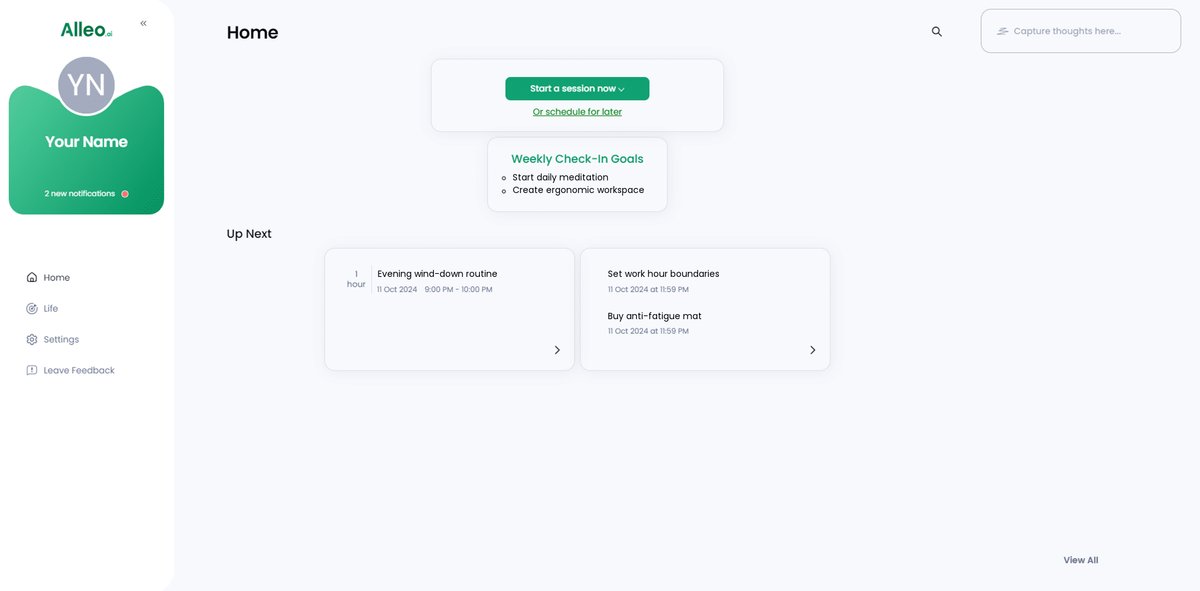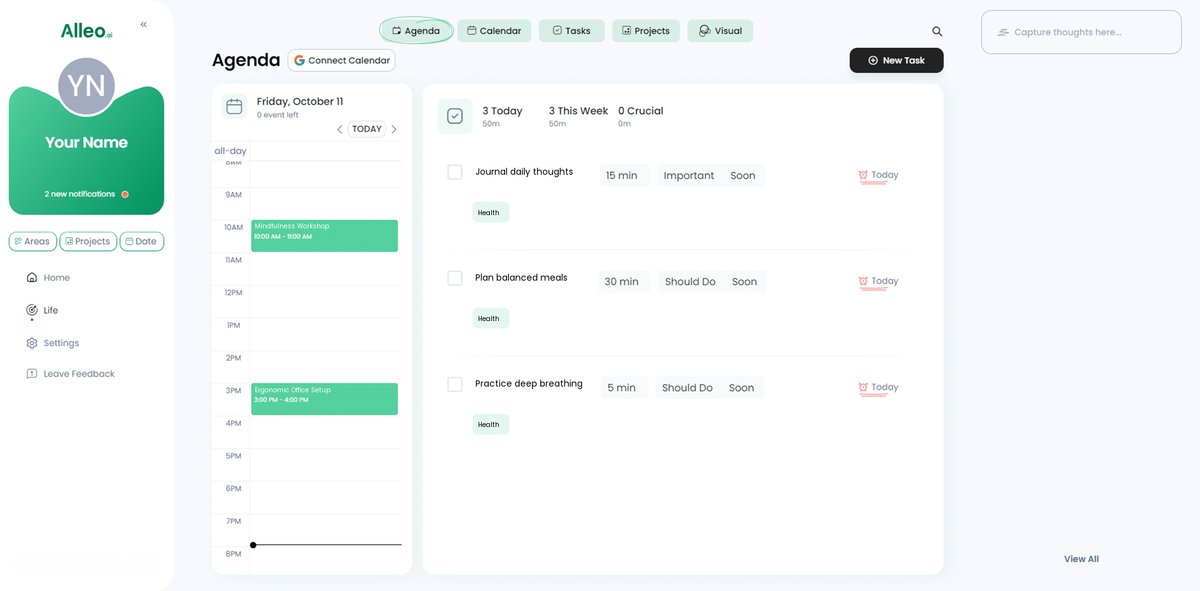7 Essential Strategies for Managing Chronic Fatigue and Pain as a Busy Professional
Are you constantly battling chronic fatigue and pain while juggling a busy professional life? Managing chronic fatigue for professionals can be a challenging task.
As a life coach, I’ve helped many professionals navigate these challenges. I understand the unique struggles faced by fitness coaches dealing with these conditions, especially when it comes to work-life balance with chronic illness.
In this article, you’ll discover practical strategies to manage chronic fatigue and pain effectively. I’ll cover personalized exercise routines, mindfulness practices, workspace optimization, and more. We’ll explore energy management techniques, pain relief for office workers, and productivity tips for chronic fatigue.
Let’s dive in to learn about self-care strategies for busy professionals and time management with chronic pain.

Understanding the Struggles of Chronic Fatigue and Pain in Your Professional Life
Managing chronic fatigue for professionals can feel like an uphill battle. It affects your ability to maintain a high level of productivity, both professionally and personally, and can disrupt work-life balance with chronic illness.
Many fitness coaches face the challenge of balancing their demanding careers while managing these conditions. This can lead to feelings of frustration and burnout, making energy management techniques crucial for success.
In my experience, people often find it hard to stick to a consistent self-care routine. The constant battle with fatigue and pain can make even simple tasks seem overwhelming, highlighting the need for effective time management with chronic pain.
But there’s hope. By adopting effective self-care strategies and productivity tips for chronic fatigue, you can regain control and improve your quality of life.

Seven Essential Steps to Manage Chronic Fatigue and Pain
Overcoming this challenge requires a few key steps. Here are the main areas to focus on for managing chronic fatigue for professionals:
- Implement a personalized exercise routine: Set realistic goals and include low-impact exercises like yoga or walking to boost energy management techniques.
- Practice mindfulness and meditation daily: Incorporate daily meditation and mindful breathing exercises for stress reduction for chronic fatigue.
- Optimize your workspace for comfort and support: Invest in ergonomic solutions for pain management and anti-fatigue matting.
- Develop a consistent sleep schedule: Establish a pre-sleep routine and limit screen time before bed to improve work-life balance with chronic illness.
- Use stress management techniques regularly: Practice journaling and progressive muscle relaxation as self-care strategies for busy professionals.
- Create a balanced meal plan for energy: Focus on nutrient-dense foods and stay hydrated, following dietary approaches for managing fatigue.
- Establish boundaries for work-life balance: Set clear work hours and take regular breaks to aid in time management with chronic pain.
Let’s dive in!
1: Implement a personalized exercise routine
A personalized exercise routine can significantly improve your energy levels and reduce pain, which is crucial for managing chronic fatigue for professionals.
Actionable Steps:
- Set realistic fitness goals: Start with small, achievable targets based on your current health status, focusing on work-life balance with chronic illness.
- Incorporate low-impact exercises: Include activities like swimming, yoga, or walking to avoid overexertion and support energy management techniques.
- Track progress: Use a journal or fitness app to monitor improvements and adjust the routine as needed, enhancing productivity tips for chronic fatigue.
Explanation:
These steps are crucial because they ensure your exercise routine is tailored to your needs and capabilities, aiding in stress reduction for chronic fatigue.
Personalized goals and low-impact exercises help you stay motivated and avoid injury, which is essential for pain relief for office workers.
Tracking your progress allows for adjustments based on what works best for you. For more on managing chronic pain through self-care, visit Whole Health Library.
With these steps in place, you can build a sustainable exercise routine that supports your well-being and helps in managing chronic fatigue for professionals.

2: Practice mindfulness and meditation daily
Practicing mindfulness and meditation daily can significantly reduce stress and manage pain, which is crucial for managing chronic fatigue for professionals.
Actionable Steps:
- Start with guided meditation: Dedicate 10 minutes each day to guided meditation using apps like Headspace or Calm, as part of your energy management techniques.
- Incorporate mindful breathing: Practice deep breathing exercises throughout the day to ease stress and pain, supporting work-life balance with chronic illness.
- Join mindfulness workshops: Participate in local or online mindfulness classes to deepen your practice and learn new techniques for stress reduction for chronic fatigue.
Explanation:
These steps are crucial as they help in managing stress, which is often linked to chronic pain and fatigue in busy professionals.
Guided meditation and mindful breathing can enhance your mental clarity and emotional resilience, contributing to productivity tips for chronic fatigue.
Joining workshops provides a supportive community and new strategies for managing chronic fatigue for professionals. For additional tips on managing stress, visit Reservio.
Implementing these practices can create a more balanced and peaceful daily routine, supporting self-care strategies for busy professionals.

3: Optimize your workspace for comfort and support
Creating a comfortable and supportive workspace is crucial for managing chronic fatigue and pain effectively for professionals.
Actionable Steps:
- Invest in ergonomic furniture: Choose an ergonomic chair and desk to minimize physical strain and improve posture, essential for managing chronic fatigue for professionals.
- Use anti-fatigue matting: Place anti-fatigue mats where you stand to reduce discomfort and support your feet, aiding in pain relief for office workers.
- Adjust lighting: Ensure your workspace has proper lighting to reduce eye strain and enhance focus, contributing to productivity tips for chronic fatigue.
Explanation:
These steps are vital because they help create a workspace that minimizes physical discomfort and maximizes productivity. Ergonomic furniture and anti-fatigue mats reduce strain on your body, while proper lighting helps maintain focus and prevent headaches, all crucial for managing chronic fatigue for professionals.
To learn more about assistive technologies that can help manage symptoms of fibromyalgia, visit University of Illinois Library Guide.
Key elements of an ergonomic workspace include:
- Adjustable chair with lumbar support
- Desk at the right height for your body
- Monitor positioned at eye level
Optimizing your workspace can lead to a more comfortable and productive work environment, essential for managing chronic fatigue for professionals and maintaining work-life balance with chronic illness.
4: Develop a consistent sleep schedule
Developing a consistent sleep schedule is crucial for managing chronic fatigue and pain, especially for professionals seeking work-life balance with chronic illness.
Actionable Steps:
- Set a bedtime routine: Establish a pre-sleep routine to signal your body it’s time to wind down, an essential energy management technique.
- Limit screen time: Avoid electronic devices at least an hour before bed, a key stress reduction strategy for chronic fatigue.
- Create a restful environment: Make your bedroom conducive to sleep with comfortable bedding and a cool, dark setting, incorporating ergonomic solutions for pain management.
Explanation:
These steps matter because a consistent sleep schedule helps regulate your body’s internal clock, making it easier to fall asleep and wake up refreshed, which is vital for managing chronic fatigue for professionals.
Limiting screen time reduces exposure to blue light, which can disrupt sleep. Creating a restful environment promotes deeper, uninterrupted sleep, essential for productivity tips for chronic fatigue.
For more tips on creating a healthy sleep routine, visit SAMHSA’s coping tips.
A consistent sleep schedule can significantly improve your overall well-being and productivity, crucial for time management with chronic pain.

5: Use stress management techniques regularly
Incorporating regular stress management techniques can significantly alleviate chronic fatigue and pain for professionals managing chronic fatigue.
Actionable Steps:
- Journal your thoughts daily: Spend 10 minutes a day writing down your feelings to process stress and identify triggers, improving work-life balance with chronic illness.
- Practice progressive muscle relaxation: Dedicate time to this technique to release tension and promote relaxation, an effective stress reduction for chronic fatigue.
- Engage in enjoyable hobbies: Allocate time for activities you love to break the cycle of stress and boost your mood, enhancing energy management techniques.
Explanation:
These steps matter because managing stress effectively can reduce the impact of chronic pain and fatigue, crucial for professionals managing chronic fatigue.
Journaling helps you understand and manage your emotional triggers. Progressive muscle relaxation releases built-up tension, easing physical discomfort and serving as pain relief for office workers.
Engaging in hobbies provides a mental break, enhancing overall well-being. For more tips on stress management, visit Reservio.
By following these steps, you can create a more balanced and stress-free routine, improving productivity for those managing chronic fatigue.

6: Create a balanced meal plan for energy
Creating a balanced meal plan is essential for managing chronic fatigue for professionals and maintaining energy levels while coping with pain.
Actionable Steps:
- Plan and prepare meals in advance: Set aside time each week to meal prep and ensure you have balanced options ready, supporting work-life balance with chronic illness.
- Focus on nutrient-dense foods: Include a variety of fruits, vegetables, lean proteins, and whole grains in your diet as part of your energy management techniques.
- Stay hydrated throughout the day: Drinking plenty of water can help maintain your energy levels and is a key self-care strategy for busy professionals.
Explanation:
These steps are crucial because a balanced meal plan provides the necessary nutrients to fuel your body and manage symptoms, which is vital for productivity tips for chronic fatigue.
Meal prepping saves time and ensures you stick to healthy choices. Nutrient-dense foods offer sustained energy, while hydration is vital for overall health and can contribute to pain relief for office workers.
For more tips on nutrition, visit Healthdirect.
Consider incorporating these energy-boosting foods into your diet as part of your dietary approaches for managing fatigue:
- Leafy greens like spinach and kale
- Nuts and seeds for healthy fats
- Lean proteins such as fish or chicken
A balanced diet can significantly impact your energy and overall well-being, supporting professionals in managing chronic fatigue and maintaining productivity.

7: Establish boundaries for work-life balance
Establishing boundaries for work-life balance is crucial to managing chronic fatigue and pain effectively for professionals.
Actionable Steps:
- Set defined work hours: Clearly outline your working hours and stick to them to avoid overworking, which is essential for managing chronic fatigue for professionals.
- Take regular breaks: Schedule short breaks throughout your day to rest and recharge, implementing energy management techniques.
- Communicate your limits: Inform colleagues and clients about your boundaries to ensure they respect your time, crucial for work-life balance with chronic illness.
Explanation:
These steps are important because they help prevent burnout and maintain your energy levels. Defined work hours ensure you have time for self-care strategies for busy professionals.
Regular breaks enhance productivity and reduce stress, which is vital for managing chronic fatigue for professionals. Communicating limits fosters a supportive work environment.
For more strategies on managing stress and burnout, visit Reservio.
Establishing these boundaries can help you achieve a healthier work-life balance while managing chronic fatigue for professionals.
Partner with Alleo on Your Self-Care Journey
We’ve explored strategies for managing chronic fatigue for professionals and pain as a busy professional. But did you know you can work directly with Alleo to make this journey easier and faster?
Setting up an account with Alleo is simple. Create a personalized plan tailored to your self-care strategies for busy professionals and work-life balance with chronic illness goals.
Alleo’s AI coach provides tailored coaching support, just like a human coach. You get full coaching sessions on energy management techniques and productivity tips for chronic fatigue, and a free 14-day trial, requiring no credit card.
Your Alleo coach will follow up on your progress, handle changes, and keep you accountable. You’ll receive text and push notifications to stay on track with time management with chronic pain and stress reduction for chronic fatigue.
Ready to get started for free? Let me show you how to begin managing chronic fatigue for professionals!
Step 1: Log In or Create Your Account
To begin your journey towards managing chronic fatigue and pain, log in to your existing Alleo account or create a new one to access personalized coaching and support.

Step 2: Choose “Improve Overall Well-being and Life Satisfaction”
Select “Improve Overall Well-being and Life Satisfaction” as your goal to address chronic fatigue and pain holistically, aligning with the strategies discussed in the article for a more balanced and fulfilling life.

Step 3: Select “Health” as Your Focus Area
Choose “Health” as your focus area in Alleo to directly address your chronic fatigue and pain, allowing the AI coach to provide tailored strategies for managing your symptoms and improving your overall well-being.

Step 4: Starting a Coaching Session
Begin your journey with Alleo by scheduling an intake session, where you’ll discuss your chronic fatigue and pain management goals and create a personalized plan to improve your well-being and work-life balance.

Step 5: Viewing and managing goals after the session
After your coaching session, check the home page of the Alleo app to view and manage the personalized goals you discussed, helping you stay on track with your chronic fatigue and pain management strategies.

Step 6: Adding events to your calendar or app
Use the calendar and task features in the Alleo app to schedule and track your self-care activities, such as exercise routines, meditation sessions, and meal prep times, helping you stay accountable and monitor your progress in managing chronic fatigue and pain.

Embrace a Healthier, More Balanced Life
Let’s recap the essential strategies we discussed for managing chronic fatigue for professionals. These actionable steps will help you regain control and improve your quality of life while maintaining work-life balance with chronic illness.
Remember, personalized exercise, mindfulness, workspace optimization, and energy management techniques are critical. Each step plays a vital role in your well-being and can provide pain relief for office workers.
You have the power to make positive changes. By implementing these strategies, including productivity tips for chronic fatigue and self-care strategies for busy professionals, you can find relief and balance.
Don’t forget, Alleo is here to support you every step of the way with time management with chronic pain solutions. Try Alleo for free and start your journey to better health today, incorporating stress reduction for chronic fatigue techniques.
Embrace your path to a healthier, more balanced life, utilizing ergonomic solutions for pain management and dietary approaches for managing fatigue.